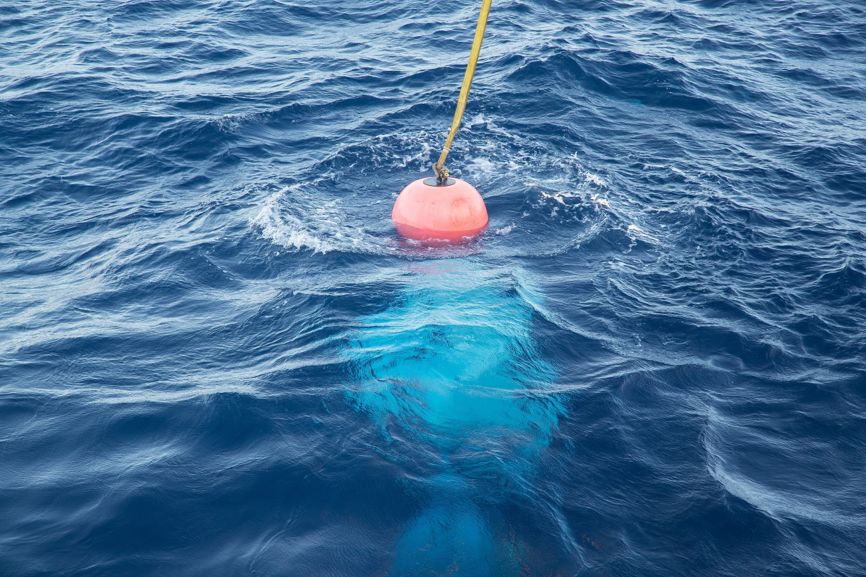
Protecting Marine Life in Baffin Bay During Expedition 400: Part II
The Protected Species Observer Watch (PSO Watch) plays a vital role in seismic profiling of seafloor sediment in Baffin Bay. In Part I, we addressed why a PSO Watch Team is necessary and the role of each member. In the second of this two-part blog series, we’ll explore the duties of this team, including the Gun Watch and their “soft start” procedure.
Part II: Specific Duties of the PSO Watch Team
What is the PSO Watch team actually looking for?
With binoculars at hand, team members search for animals who may stray dangerously close to the seismic air gun’s work. Exclusion Zones (EZ) are set for each site and factor in depth and visibility. Whether a sighting is within or beyond the EZ, all sightings are reported in relation to this area. At the site of Expedition 400’s first VSP, the EZ was 100 meters for diving birds and 940 meters for sea mammals and the occasional turtles that find themselves in the Arctic. For sites where the water depths are shallower than 1,000 meters, the zone for sea mammals and turtles is within 1,410 meters. This is because in shallower waters, air gun sound waves travel farther so the area affected is greater.
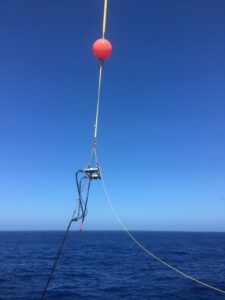
What Information Do the Observers Collect and Record?
The following information recorded by the observers includes:
- Time of sighting (ship’s local time)
- EZ status (IN, OUTSIDE moving towards, OUTSIDE moving away, OUTSIDE unknown)
- Direction spotted relative to the ship’s heading and air gun location.
- Direction moving relative to the ship’s heading and air gun location.
Tracking takes Focus!
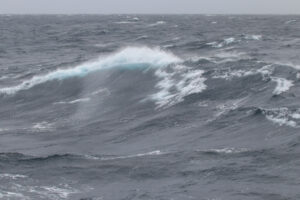
This job presents unique challenges. Tracking marine animal activity amidst rolling seas and rocking ships demands complete concentration. Complicating matters further are the elusive nature of some species and the difficulty in accurately gauging distances. Consequently, the Watch Team members are extra-vigilant and err on the side of caution.
Regardless of the distance from the ship, all sightings, excluding ice, must be reported using hand-held radios. Observers make every effort to keep their eyes on the sighted object and to determine if it is moving towards or away from the air gun location. If the sighting is lost, they assume the presence of a protected species in the zone and wait an hour before resuming operations.
Unpredictable weather adds yet another layer of complexity. In Baffin Bay, rainbows following a gentle mist can change within minutes to flurries. If fog or adverse weather, in general obscures the horizon, then the watch and any VSP activity is called off until visibility increases.
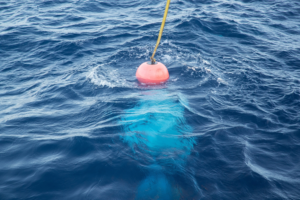
What are the responsibilities of the Gun Watch?
Gun Watch members continuously communicate with the other observers and record the air gun firing activity including: time of shot, air pressure, deployment and retrieval time. When a sighting is reported, the Gun Watch must immediately suspend shooting. The Captain or the LO will decide when it’s safe to resume, referring to a decision chart.
And what about that ‘soft start’ business?
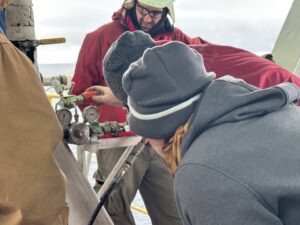
Using a portable battery, the Gun Watch initiates a “soft start” of the seismic source. Shots start at 500 pounds per square inch (psi), with the pressure increasing by 25 psi every 30 seconds, until it reaches 2000 psi. This allows marine animals to detect and react to the noise gradually, reducing the likelihood of startling them or causing harm. Any sightings within the EZ will halt the “soft start.”
By following strict protocols and promptly reporting sightings, the JOIDES PSO teams contribute to both scientific research and environmental conservation, ensuring that the exploration of the seafloor is conducted responsibly and with full consideration for marine life.
Sources for this two-part blog: Lisa Crowder (JRSO), Etienne Claassen (JRSO), Johanna Suhonen (JRSO), VSP Watch Stander Guide; Lara Perez (GEUS & IODP)